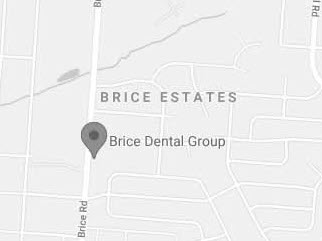Invisalign is a revolutionary orthodontic treatment that has gained immense popularity over the years.
Unlike traditional braces, Invisalign uses clear plastic aligners to gently shift teeth into the desired position. This treatment option has become increasingly popular due to its effectiveness in correcting misaligned teeth and its discreet appearance.
Brief Overview of Invisalign and Its Popularity
Invisalign was first introduced in 2000 and has since become a popular alternative to traditional braces, especially among adults who may be self-conscious about their appearance with metal brackets and wires. The aligners are custom-made to fit each patient’s mouth, making them comfortable to wear and easy to remove when needed.
In recent years, Invisalign has gained even more popularity due to advancements in technology that have made the treatment process more efficient. The use of 3D imaging technology allows for highly accurate aligner fabrication, resulting in shorter treatment times and better outcomes.
Importance of Oral Health
Maintaining good oral health is crucial for overall wellness. Poor oral hygiene can lead to a host of issues such as tooth decay, gum disease, bad breath, and even systemic health problems like heart disease or diabetes. Misaligned teeth can also contribute to dental problems by making it difficult to properly clean between teeth or causing bite issues that put undue stress on certain teeth or areas of the jaw.
By straightening teeth with Invisalign, patients can improve their overall oral health by reducing the risk of these issues occurring. In addition, straighter teeth also improve the aesthetics of one’s smile which often leads to increased self-confidence which can boost mental wellbeing as well.
Overall, there are many benefits associated with choosing Invisalign as an orthodontic treatment option beyond just the cosmetic benefits. By investing in oral health with Invisalign, patients can achieve a healthy, confident smile that lasts a lifetime.
What is Invisalign?
Invisalign is a popular orthodontic treatment that straightens teeth using clear, plastic aligners. These aligners are custom-made for each patient using 3D imaging technology. The aligners gradually shift the teeth into their proper position over a period of months or years, depending on the severity of the misalignment.
Invisalign Treatment
Invisalign is an alternative to traditional braces, which use metal brackets and wires to move teeth into place. Invisalign uses a series of clear plastic trays, called aligners, to gently guide teeth into their correct positions. These trays are custom-made for each patient based on impressions taken of their teeth.
Each set of aligners is worn for about two weeks before being replaced by the next set in the series. The Invisalign treatment process begins with a consultation with an orthodontist or dentist who has been trained in Invisalign technology.
During this initial visit, the doctor will evaluate your oral health and discuss your goals for treatment. If Invisalign is determined to be a good option for you, 3D images will be taken of your mouth and used to create custom aligners that fit snugly over your teeth.
Comparison with traditional braces
Compared to traditional braces, Invisalign has several advantages. One major advantage is its appearance; because the aligners are clear and virtually invisible when worn, they are much less noticeable than metal braces.
Another advantage is that the trays can be removed easily for eating and brushing/flossing one’s teeth. Unlike traditional braces which require regular adjustments by an orthodontist or dentist throughout treatment duration (usually every 4-6 weeks), patients using Invisalign typically only require occasional check-ins with their provider during treatment duration (usually every 8-12 weeks).
This is because the aligners are designed to be changed out by the patient at home every two weeks. Invisalign treatment is typically more comfortable than traditional braces as there are no metal brackets or wires that could cause irritation.
However, like with other orthodontic treatments, patients using Invisalign may experience mild discomfort when switching to a new set of aligners, but this usually subsides within a few days. Overall, Invisalign is an advanced orthodontic treatment that offers a comfortable and discreet solution for correcting dental misalignment issues.
How does Invisalign work?
Invisalign aligners work by applying a gentle and consistent force on the teeth, gradually moving them into the desired position. Unlike traditional braces that use metal brackets and wires, Invisalign relies on custom-made clear plastic aligners that fit snugly over the teeth.
The process and steps involved
The first step in getting Invisalign treatment is to consult with an orthodontist or a dentist who is trained in this type of treatment. After determining that Invisalign is a suitable option for you based on your oral health needs and goals, your dental provider will take impressions of your teeth using 3D imaging technology. The impressions will be used to create a virtual 3D representation of your teeth, which will be used to design a customized treatment plan.
Once your aligners are ready, you will wear them for at least 22 hours per day, only removing them for eating, brushing, and flossing. Every two weeks or so, you will switch to a new set of aligners that are slightly different from the previous ones in order to continue progressing towards your desired tooth alignment.
Use of 3D imaging technology
One of the key advantages of Invisalign is its use of advanced 3D imaging technology. This allows dentists and orthodontists to create highly accurate digital models of patients’ teeth and simulate how they will move during treatment. With this technology, dental providers can precisely plan each step in the process and monitor progress along the way.
The use of 3D imaging also means that patients can see what their final results will look like before they even begin treatment. This provides both patients and dental providers with additional confidence as they work towards achieving their goals for better oral health with straighter teeth thanks to Invisalign’s advanced approach to teeth alignment.
Straightening Teeth
One of the most significant benefits of Invisalign for oral health is its ability to straighten teeth. Crooked or misaligned teeth can cause several dental problems, including tooth decay, gum disease, and difficulty cleaning.
Invisalign aligners gently shift the teeth into proper alignment, improving their appearance and function. Straighter teeth also make it easier to maintain proper oral hygiene habits like brushing and flossing.
Improved Bite Alignment
In addition to straightening teeth, Invisalign aligners can also improve bite alignment. Misaligned bites can cause several dental problems such as jaw pain, headaches, and tooth wear, among others. Invisalign aligners work by applying gentle pressure on specific areas of the mouth to improve bite alignment gradually.
Reduced Risk of Tooth Decay and Gum Disease
The proper alignment of teeth and bite reduces the risk of tooth decay and gum disease by making it easier to clean all parts of the mouth adequately. Bacteria thrive in hard-to-reach places that crooked or misaligned teeth create; however, with properly aligned teeth using Invisalign treatment, brushing and flossing become more effective.
Easier to Clean Teeth
Invisalign aligners are removable trays that allow you to remove them when eating or brushing your teeth. In contrast with traditional braces that have brackets attached with wires running through them which makes it difficult for food particles not being trapped between them since they cannot be removed easily for cleaning.
Better Overall Oral Hygiene
Straightening teeth with Invisalign improves overall oral hygiene as it promotes good dental habits such as regular brushing and flossing. Maintaining good oral hygiene helps prevent common dental problems like cavities or gum disease in the long run.
Comfortable Treatment
Unlike traditional braces, Invisalign aligners are made of smooth plastic that fits snugly over the teeth. They have no metal brackets or wires that poke or irritate the mouth and they are more comfortable to wear. Patients can continue their daily life without experiencing discomfort.
Convenient Lifestyle
Invisalign aligners are removable, so patients can take them out when eating, drinking, brushing or flossing; this is an advantage over traditional braces which require dietary restrictions and make it difficult for patients to clean their teeth properly. With Invisalign, there are no dietary restrictions or limitations, and oral hygiene is more accessible to maintain.
Cost considerations
The cost of Invisalign treatment varies depending on several factors including the length and complexity of treatment needed as well as the geographic location of the provider. On average, patients can expect to pay between $3,000 and $8,000 for their entire course of treatment. It’s important to note that many dental insurance plans do not cover orthodontic treatments like Invisalign.
However, some providers offer financing options or payment plans to help make the cost more manageable. It’s also worth considering that while Invisalign may initially seem more expensive than traditional braces, it often requires fewer office visits and less time off work/school since there are no adjustments needed every few weeks.
The importance of compliance with wearing aligners
The success of Invisalign depends heavily on patient compliance with wearing the aligners as prescribed by their provider. This means wearing them at least 22 hours a day, removing them only to eat, drink (anything other than water), brush, and floss.
Inconsistent or improper wear of the aligners can result in slower progress or even relapse of the teeth back to their original position. Providers will often monitor patient compliance with regular check-ins and may adjust treatment protocols if necessary.
It’s important for patients to understand the commitment involved in Invisalign treatment and be willing to adhere to the prescribed regimen. While it may require some adjustments and discipline, the benefits of improved oral health and a confident smile are well worth it in the end.
The benefits and advantages offered by Invisalign for oral health
Invisalign is a highly effective treatment option for those seeking straighter teeth and better oral health. Invisalign offers significant benefits over traditional braces, including improved aesthetics, increased comfort, and greater convenience.
The use of 3D imaging technology allows for a more accurate fit and better results. Additionally, the smooth plastic aligners make it easier to maintain good oral hygiene, reducing the risk of tooth decay and gum disease.
Consider Invisalign for straighter teeth and better oral health
If you are considering orthodontic treatment to improve your smile or overall oral health, Invisalign is a great option to explore. It is important to consult with an experienced orthodontist who can evaluate your individual needs and determine if Invisalign is right for you.
With proper compliance in wearing the aligners for at least 22 hours per day, you can achieve a beautifully straightened smile in as little as 6-18 months. Don’t let concerns about aesthetics or discomfort hold you back from achieving optimal oral health – schedule an appointment today to learn more about how Invisalign can transform your smile!
Do not wait any longer. Book your appointment now and achieve the smile you have always wanted. Saniya Kamran, DMD is accepting new patients from Reynoldsburg and the surrounding area.


